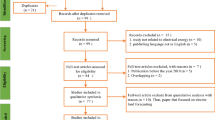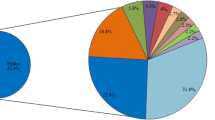Abstract
The optimization of crude oil-supply portfolio is a hot research issue in energy security, which is closely related to the implementation of national strategy and development of economy. Forecasting the demand of crude oil is the basis for portfolio optimization. Therefore, this paper innovatively introduces the decomposition hybrid interval prediction method and proposes a multi-objective programming model in order to provide decision-making support for the formulation of crude oil-supply portfolio scheme. Under the constraints of volume, price and risk, the minimum cost and risk of importing crude oil are achieved. Furthermore, by introducing optimization parameters and risk preference factors, and setting different scenarios for numerical simulation, the results show that (1) decomposition hybrid prediction methods perform better than single prediction methods. (2) As the optimization parameter increases, costs and risks are significantly decreased. Decision-makers can set large parameters to achieve significant optimization of the objective function. (3) The total cost of imported crude oil fluctuates sharply, while the total risk decreases with the increase of risk preference factors under the different scenarios. (4) The fluctuation of price and risk adjustment factors will cause the change of oil-supply portfolio optimization scheme.


















Similar content being viewed by others
References
Augutis, J., Krikštolaitis, R., Martišauskas, L., Pečiulytė, S., & Žutautaitė, I. (2017). Integrated energy security assessment. Energy, 138, 890–901.
Bedi, J., & Toshniwal, D. (2019). Deep learning framework to forecast electricity demand. Applied Energy, 238, 1312–1326.
Bompard, E., Carpignano, A., Erriquez, M., Grosso, D., Pession, M., & Profumo, F. (2017). National energy security assessment in a geopolitical perspective. Energy, 130, 144–154.
Cohen, G., Joutz, F., & Loungani, P. (2011). Measuring energy security: Trends in the diversification of oil and natural gas supplies. Energy Policy, 39, 4860–4869.
Djimeu, E. W., & Omgba, L. D. (2019). Oil windfalls and export diversification in oil-producing countries: Evidence from oil booms. Energy Economics, 78, 494–507.
Ge, F., & Fan, Y. (2013). Quantifying the risk to crude oil imports in China: An improved portfolio approach. Energy Economics, 40, 72–80.
Geng, J., & Ji, Q. (2014). Multi-perspective analysis of China's energy supply security. Energy, 64, 541–550.
Geng, J., Ji, Q., Fan, Y., & Shaikh, F. (2017). Optimal LNG importation portfolio considering multiple risk factors. Journal of Cleaner Production, 151, 452–464.
Ghaithan, A. M., Attia, A., & Duffuaa, S. O. (2017). Multi-objective optimization model for a downstream oil and gas supply chain. Applied Mathematical Modelling, 52, 689–708.
Gillessen, B., Heinrichs, H., Hake, J. F., & Allelein, H. J. (2019). Natural gas as a bridge to sustainability: Infrastructure expansion regarding energy security and system transition. Applied Energy, 251, 113377.
He, Y., & Lin, B. (2018). Forecasting China's total energy demand and its structure using ADL-MIDAS model. Energy, 151, 420–429.
Huang, G., Zhu, Q., & Siew, C. (2006). Extreme learning machine: Theory and applications. Neurocomputing, 70, 489–501.
Johannesen, N. J., Kolhe, M., & Goodwin, M. (2019). Relative evaluation of regression tools for urban area electrical energy demand forecasting. Journal of Cleaner Production, 218, 555–564.
Ketabchi, S., Moosaei, H., Razzaghi, M., & Pardalos, P. M. (2017). An improvement on parametric ν-support vector algorithm for classification. Annals of Operations Research, 276, 155–168.
Kong, Z., Lu, X., Jiang, Q., Dong, X., Liu, G., Elbot, N., et al. (2019). Assessment of import risks for natural gas and its implication for optimal importing strategies: A case study of China. Energy Policy, 127, 11–18.
Le Coq, C., & Paltseva, E. (2009). Measuring the security of external energy supply in the European Union. Energy Policy, 37, 4474–4481.
Lee, Y., & Tong, L. (2011). Forecasting energy consumption using a grey model improved by incorporating genetic programming. Energy Conversion and Management, 52, 147–152.
Leila, M., Whalen, J., & Bergthorson, J. (2018). Strategic spatial and temporal design of renewable diesel and biojet fuel supply chains: Case study of California, USA. Energy, 156, 181–195.
Li, C., Tao, Y., Ao, W., Yang, S., & Bai, Y. (2018a). Improving forecasting accuracy of daily enterprise electricity consumption using a random forest based on ensemble empirical mode decomposition. Energy, 165, 1220–1227.
Li, J., Sun, X., Wang, F., & Wu, D. (2014a). Risk integration and optimization of oil-supplying maritime system: A multi-objective programming approach. Annals of Operations Research, 234, 57–76.
Li, J., Tang, L., Sun, X., & Wu, D. (2014b). Oil-supplying optimal decision considering country risk with extreme events: A multi-objective programming approach. Computers and Operations Research, 42, 108–115.
Li, J., Tang, L., Sun, X., Yu, L., He, W., & Yang, Y. (2012). Country risk forecasnting for major oil exporting countries: A decomposition hybrid approach. Computers abd Industrial Engineering, 63, 641–651.
Li, J., Feng, Y., Li, G., & Sun, X. (2020a). Tourism companies’ risk exposures on text disclosure. Annals of Tourism Research. https://doi.org/10.1016/j.annals.2020.102986.
Li, J., Li, G., Liu, M., Zhu, X., & Wei, L. (2020b). A novel text-based framework for forecasting agricultural futures using massive online news headlines. International Journal of Forecasting. https://doi.org/10.1016/j.ijforecast.2020.02.002.
Li, L., Qu, X., Zhang, J., Li, H., & Ran, B. (2018b). Travel time prediction for highway network based on the ensemble empirical mode decomposition and random vector functional link network. Applied Soft Computing, 73, 921–932.
Li, X. (2005). Diversification and localization of energy systems for sustainable development and energy security. Energy Policy, 33, 2237–2243.
Mason, K., Duggan, J., & Howley, E. (2018). Forecasting energy demand, wind generation and carbon dioxide emissions in Ireland using evolutionary neural networks. Energy, 155, 705–720.
Montgomery, J. M., Hollenbach, F. M., & Ward, M. D. (2015). Calibrating ensemble forecasting models with sparse data in the social sciences. International Journal of Forecasting, 31, 930–942.
Moonchai, S., & Chutsagulprom, N. (2020). Short-term forecasting of renewable energy consumption: Augmentation of a modified grey model with a Kalman filter. Applied Soft Computing, 87, 105994.
Nouri, N., & Ladhari, T. (2017). Evolutionary multiobjective optimization for the multi-machine flow shop scheduling problem under blocking. Annals of Operations Research, 267, 413–430.
Pan, L., Liu, P., & Li, Z. (2017). A system dynamic analysis of China’s oil supply chain: Over-capacity and energy security issues. Applied Energy, 188, 508–520.
Piltan, M., Shiri, H., & Ghaderi, S. F. (2012). Energy demand forecasting in Iranian metal industry using linear and nonlinear models based on evolutionary algorithms. Energy Conversion and Management, 58, 1–9.
Razm, S., Nickel, S., & Sahebi, H. (2019). A multi-objective mathematical model to redesign of global sustainable bioenergy supply network. Computers and Chemical Engineering, 128, 1–20.
Ren, S., Chan, H., & Ram, P. (2016). A comparative study on fashion demand forecasting models with multiple sources of uncertainty. Annals of Operations Research, 257, 335–355.
Shao, Y., Qiao, H., & Wang, S. (2017). What determines China's crude oil importing trade patterns? Empirical evidences from 55 countries between 1992 and 2015. Energy Policy, 109, 854–862.
Shi, Y., Tian, Y., Kou, G., Peng, Y., & Li, J. (2011). Optimization based data mining theory and applications. Berlin: Springer.
Sun, S., Sun, Y., Wang, S., & Wei, Y. (2018). Interval decomposition ensemble approach for crude oil price forecasting. Energy Economics, 76, 274–287.
Sun, W., & Xu, Y. (2017). Research on China's energy supply and demand using an improved Grey–Markov chain model based on wavelet transform. Energy, 118, 969–984.
Sun, X., Liu, C., Chen, X., & Li, J. (2017). Modeling systemic risk of crude oil imports: Case of China’s global oil supply chain. Energy, 121, 449–465.
Veerakumar, T., Subudhi, B. N., & Esakkirajan, S. (2019). Empirical mode decomposition and adaptive bilateral filter approach for impulse noise removal. Expert Systems with Applications, 121, 18–27.
Vivoda, V. (2009). Diversification of oil import sources and energy security: A key strategy or an elusive objective? Energy Policy, 37, 4615–4623.
Vivoda, V. (2019). LNG import diversification and energy security in Asia. Energy Policy, 129, 967–974.
Wang, J., Sun, X., Li, J., Chen, J., & Liu, C. (2018a). Has China’s oil-supply portfolio been optimized from 2005 to 2014? A perspective of cost-risk tradeoff. Computers and Industrial Engineering, 126, 451–464.
Wang, S., Yu, L., Tang, L., & Wang, S. (2011). A novel seasonal decomposition based least squares support vector regression ensemble learning approach for hydropower consumption forecasting in China. Energy, 36, 6542–6554.
Wang, X., Luo, D., Zhao, X., & Sun, Z. (2018b). Estimates of energy consumption in China using a self-adaptive multi-verse optimizer-based support vector machine with rolling cross-validation. Energy, 152, 539–548.
Wei, L., Li, G., Zhu, X., Sun, X., & Li, J. (2019). Developing a hierarchical system for energy corporate risk factors based on textual risk disclosures. Energy Economics, 80, 452–460.
Wu, D., Li, J., Xia, T., Bao, C., Zhao, Y., & Dai, Q. (2018). A multiobjective optimization method considering process risk correlation for project risk response planning. Information Sciences, 467, 282–295.
Wu, G., Liu, L., & Wei, Y. (2009). Comparison of China's oil import risk: Results based on portfolio theory and a diversification index approach. Energy Policy, 37, 3557–3565.
Wu, G., Wei, Y., Fan, Y., & Liu, L. (2007). An empirical analysis of the risk of crude oil imports in China using improved portfolio approach. Energy Policy, 35, 4190–4199.
Xu, X., Hao, J., Yu, L., & Deng, Y. (2019). Fuzzy optimal allocation model for task-resource assignment problem in a collaborative logistics network. IEEE Transactions on Fuzzy Systems, 27, 1112–1125.
Xu, X., Hao, J., & Zheng, Y. (2020). Multi-objective artificial bee colony algorithm for multi-stage resource leveling problem in sharing logistics network. Computers and Industrial Engineering, 142, 106338.
Yang, H., & Chen, Y. (2019). Hybrid deep learning and empirical mode decomposition model for time series applications. Expert Systems with Applications, 120, 128–138.
Yang, Y., Li, J., Sun, X., & Chen, J. (2014). Measuring external oil supply risk: A modified diversification index with country risk and potential oil exports. Energy, 68, 930–938.
Yin, P., & Chao, C. (2018). Automatic selection of fittest energy demand predictors based on cyber swarm optimization and reinforcement learning. Applied Soft Computing, 71, 152–164.
Yu, L., Liang, S., Chen, R., & Lai, K. (2019). Predicting monthly biofuel production using a hybrid ensemble forecasting methodology. International Journal of Forecasting. https://doi.org/10.1016/j.ijforecast.2019.08.014.
Yu, L., Wang, S., & Lai, K. (2008). Forecasting crude oil price with an EMD-based neural network ensemble learning paradigm. Energy Economics, 30, 2623–2635.
Yu, L., Zhao, Y., & Tang, L. (2014). A compressed sensing based AI learning paradigm for crude oil price forecasting. Energy Economics, 46, 236–245.
Yu, L., Zhao, Y., & Tang, L. (2017). Ensemble forecasting for complex time series using sparse representation and neural networks. Journal of Forecasting, 36, 122–138.
Yu, S., Zhang, S., Agbemabiese, L., & Zhang, F. (2015). Multi-stage goal programming models for production optimization in the middle and later periods of oilfield development. Annals of Operations Research, 255, 421–437.
Zhang, H., Ji, Q., & Fan, Y. (2013). An evaluation framework for oil import security based on the supply chain with a case study focused on China. Energy Economics, 38, 87–95.
Zhang, X., Zhong, Q., Qu, Y., & Li, H. (2017). Liquefied natural gas importing security strategy considering multi-factor: A multi-objective programming approach. Expert Systems with Applications, 87, 56–69.
Zhao, C., & Chen, B. (2014). China’s oil security from the supply chain perspective: A review. Applied Energy, 136, 269–279.
Zhao, Y., Li, J., & Yu, L. (2017). A deep learning ensemble approach for crude oil price forecasting. Energy Economics, 66, 9–16.
Acknowledgements
We gratefully acknowledge the financial support from National Natural Science Foundation of China (Nos. 71771206, 71425002) and President’s Youth Foundation of the Institutes of Science and Development, CAS (No. Y7X111Q01). We wish to express our sincere gratitude to the anonymous referees for their constructive comments on and review of the earlier draft of our paper according to which we have improved the content.
Author information
Authors and Affiliations
Corresponding author
Additional information
Publisher's Note
Springer Nature remains neutral with regard to jurisdictional claims in published maps and institutional affiliations.
Rights and permissions
About this article
Cite this article
Sun, X., Hao, J. & Li, J. Multi-objective optimization of crude oil-supply portfolio based on interval prediction data. Ann Oper Res 309, 611–639 (2022). https://doi.org/10.1007/s10479-020-03701-w
Published:
Issue Date:
DOI: https://doi.org/10.1007/s10479-020-03701-w




